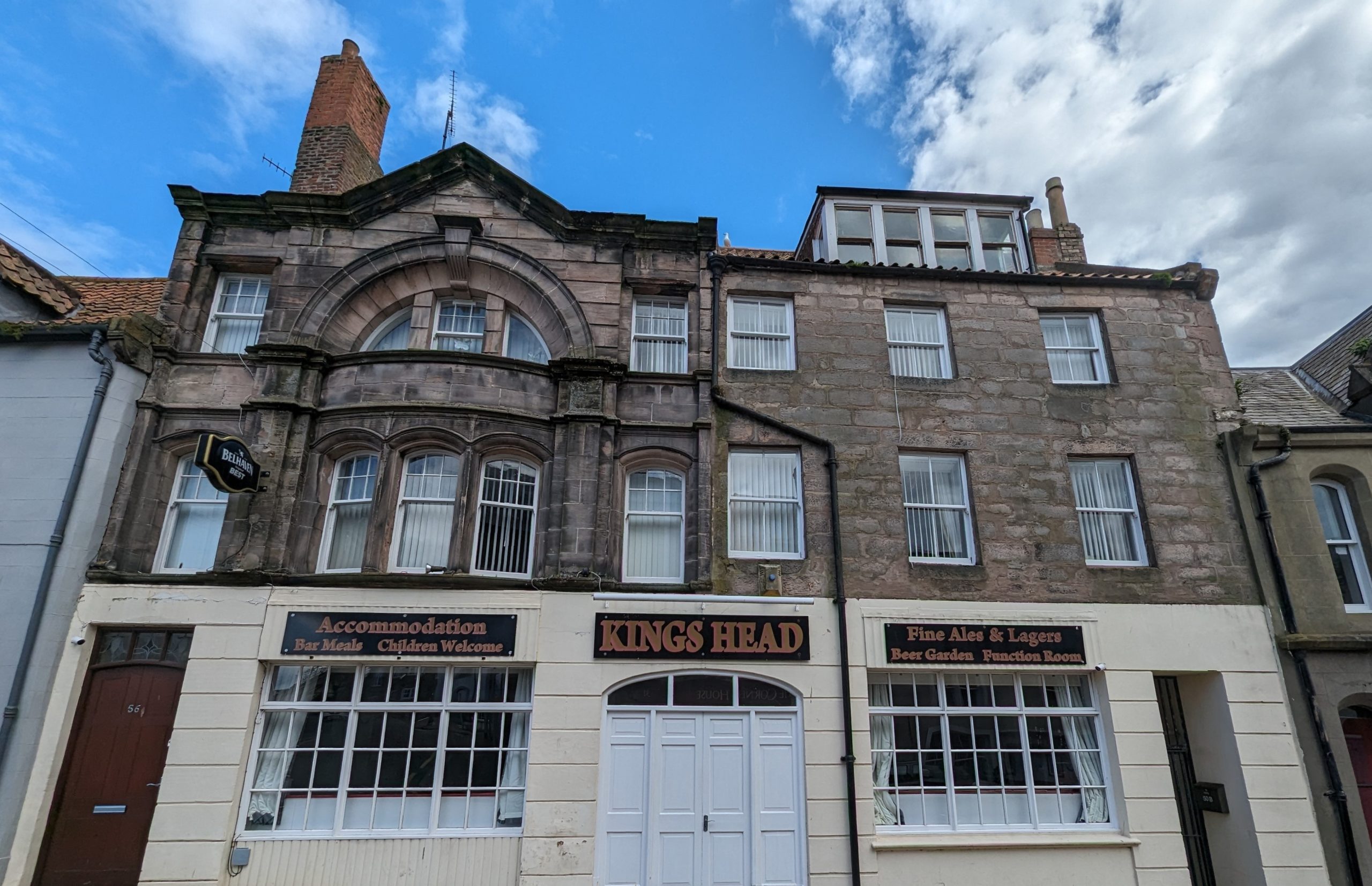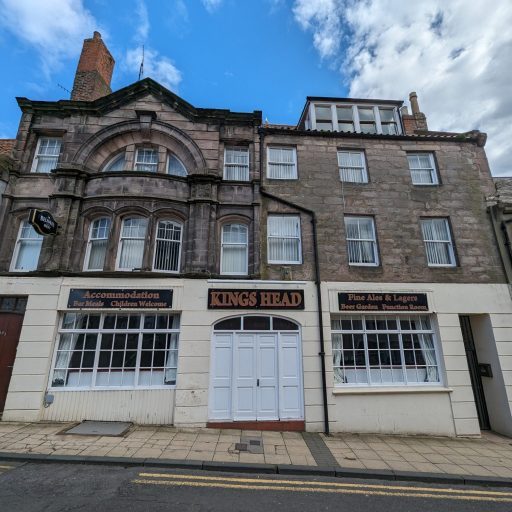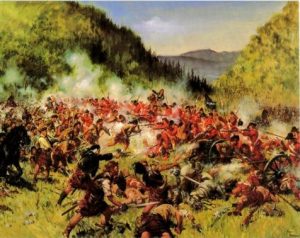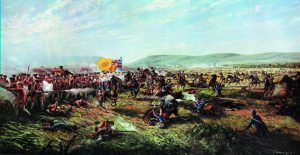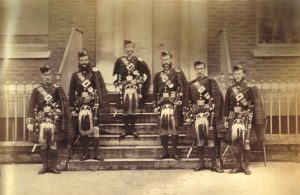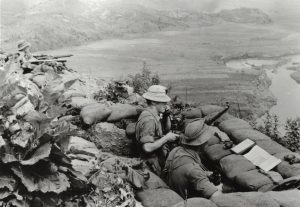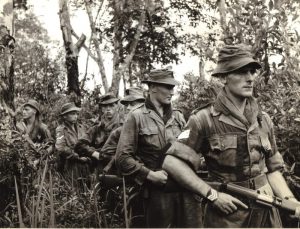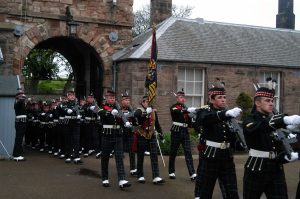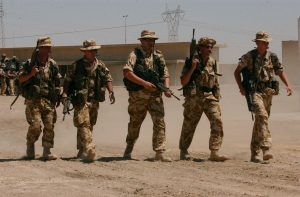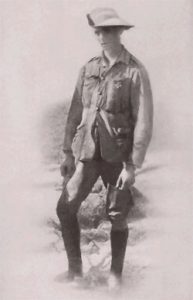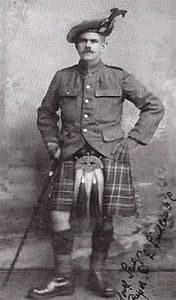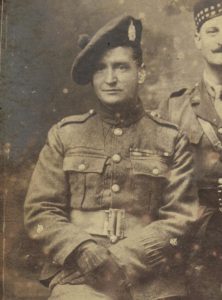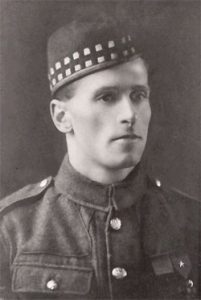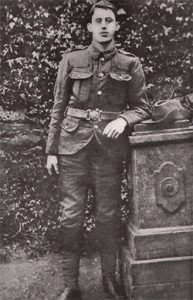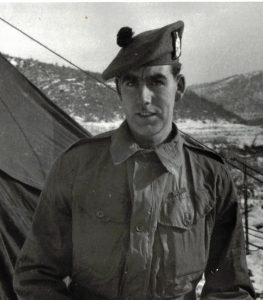The King's Own Scottish Borderers
The Kings Head Inn has a very close affiliation with the famous regiment The King's Own Scottish Borderers. Our location is very close to Berwick Barracks and because of this we have played host to many of the serving and visitng soldiers. The Regiment is now part of The Royal Regiment of Scotland.
On the 1st August each year the Battle of Minden is celebrated. Many of the men celebrate this day with us and enjoy reunions and entertainments throughout the day. We are proud to welcome the Inter Scaldis Pipe Band from Holland each year and they ensure we always have a great day.
1689 – A Regiment in 2 hours - Killiecrankie
Raised in Edinburgh on 18th March 1689 by David Leslie, 3rd Earl of Leven – it was reported that 800 men were recruited within the space of 2 hours - the Regiment first saw action at the Battle of Killiecrankie on July 27th of that year. Although the Jacobite rebels forced the Government army to retreat, Leven’s new Regiment acquitted itself well, and was granted the privilege of recruiting by beat of drum within the City of Edinburgh without the prior permission of the Lord Provost.
In 1691 the Regiment fought a hard and bloody campaign in Ireland, taking part in the assault on Ballymore (7th June), the siege of Athlone, the Battle of Aughrim (12th July), and the sieges of Galway and Limerick. This was followed by 5 years (1692-97) in the Low Countries fighting the French. At the siege of Namur on 27th July 1695, in the course of an assault on the outer defences of the town, 20 officers and 500 men were killed by an exploding mine. The survivors rallied and pressed on with the attack, driving the French back to the main defences. For this action the Regiment was awarded its first Battle Honour.
The 18th Century – Rebellion at Home – Service Abroad
Renewed Jacobite activity in the eighteenth century culminated in the Battles of Sheriffmuir (13th November 1715) and Culloden (16th April 1746). The Regiment took part in both battles - the only Scottish Regiment to have fought for the Government in all three decisive engagements of the Jacobite wars. For most of the century, however, the Regiment was stationed abroad. It was in Gibraltar from 1726-36, and the West Indies between1740 and 1743, returning to Flanders – and its old enemy the French -in 1744. At the Battle of Fontenoy on 11th May 1745, Sempill’s Regiment (as it was then titled) formed part of a hollow square of infantry that turned back repeated French cavalry charges until the order to retreat was given. Nearly one third of the Regiment was lost in this encounter.
In 1751 the Regiment became the 25th Regiment of Foot. Another Battle Honour was won at Minden on the 1st August 1759 when, with 5 other infantry regiments, the 25th marched in line against 10,000 French cavalry and succeeded in breaking the French centre. On the return of the Regiment from the war in Germany, the Regimental Colours - which had been carried into battle at Minden, Warburg, Klosterkampen, Fellinghausen and Wilhelmstahl - were retired and were buried with military honours at St. Nicholas Church, Newcastle upon Tyne (31st May 1763).
A lengthy period of service in Minorca (1768-80) was followed in 1782 by an expedition to Gibraltar, which was under attack by Spain. In the same year the Regiment was retitled ‘The 25th (Sussex) Regiment of Foot’. It was thought that the addition of an English county name would stimulate recruiting!
At the outbreak of the French Revolutionary War the 25th was in Plymouth, and between 1793 and 1797 supplied marine parties for service aboard warships in the Mediterranean, the English Channel and the North Sea. The Grenadier and Light Companies were both present at Admiral Howe’s great victory on the ‘Glorious First of June’, 1794. A second Battalion was formed in 1795 to reinforce the first, which had been sent to Grenada to quell a revolt of the slave population there. En route to the West Indies, 2/25’s ship was captured by a French corvette. The men were taken aboard the French vessel and placed in irons, but managed to overpower their captors and turn the ship back towards Grenada.
The 19th Century – Napoleon – Policing the Empire
On the 2nd October 1799 the 25th won a third Honour at the Battle of Egmont-op-Zee, fighting in the forefront of Sir John Moore’s Brigade on the sand hills of Holland. In 1801 the Regiment went to Egypt with Sir Ralph Abercrombie’s expedition, and was granted the right to bear the emblem of the Sphinx on the Colours for its part in the capture of Alexandria. During the Napoleonic War the 1st Battalion returned to the West Indies. In joint operations with the Navy, Martinique was taken in 1809, and Guadeloupe in 1811. During this campaign the Battalion lost more men through disease than through enemy action.
Throughout the rest of the 19th century the 25th (King’s Own Borderers) Regiment of Foot – King George III had conferred the Royal title in 1805 – was engaged in operations in various parts of the Empire: West Indies (1837-39), Ireland (1837-39), South Africa (1840-42), India (1842-55), Gibraltar (1858-63), Malta (1863-64), Canada (1865-66), Ireland (1872-75) India (1875-81), Afghanistan (1878-80), and Burma, with the Chin Lushai Expedition (1889-90). A second Battalion was again raised in 1859, and saw service in Ceylon (1863-68), India (1869-75), Sudan, with the Suakim Field Force (1888), and India (1890-1903), earning new Battle Honours at the Siege of Chitral (1895) and with the Tirah Expedition against the Afridis (1897).
In 1873 the Regiment was allocated a Depot at York, and in 1881, when territorial titles and regimental districts were introduced, it was proposed that the 25th Foot should be re-designated ‘The York Regiment (King’s Own Borderers)’. Parliament was successfully lobbied, and on 29th July 1881 ‘The King’s Own Borderers’ moved to a new Depot at Berwick-upon-Tweed Barracks. The national origins of the Regiment were further recognised in 1887 when it acquired its present title ‘The King’s Own Scottish Borderers’.
From 1900 to 1902 the 1st Battalion was in South Africa, fighting in the Orange Free State (Paardeberg) and the Transvaal. They were joined by the 3rd (Militia) Battalion, whose job was to guard lines of communication, and Service Companies from the Volunteer Battalions.
World War 1
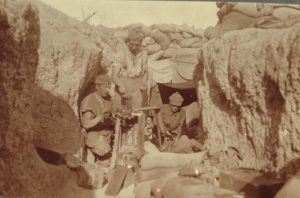
At the outbreak of war in August 1914, the two Regular Battalions and the two Territorial Battalions (4th and 5th) were mobilized. In addition, ‘New Army’ Battalions (6th, 7th and 8th) were raised, together with a 9th Battalion, which provided reinforcements for the other Battalions, and a 10th (Garrison) Battalion. The 1st Battalion fought on the Gallipoli Peninsula, and then on the Somme, at Ypres, Lys and Cambrai. 2nd KOSB served with the BEF at Mons, Le Cateau and on the Aisne, and later at the 2nd and 3rd Battles of Ypres, the Somme, Vimy Ridge and the Lys. The 4th and 5th Battalions fought at Gallipoli with the 52nd Division, then in Palestine (Battle of Gaza) and France. The 6th Battalion suffered heavy casualties at the Battle of Loos in September 1915, and later fought on the Somme, atArras and at Ypres. The 7th Battalion lost about two-thirds of its strength and the 8th over one-third at the Battle of Loos, and the two Battalions were amalgamated in the spring of 1916. 7th/8th KOSB went on to fight on the Somme, at Arras, Pilckem, at Arras again during the great German Spring Offensive of 1918, and on the Marne (with the French and Americans), ending the war in Belgium.
Between the two World Wars the 1st Battalion served in India and Chanak (1922), Malta and Palestine (1936). 2nd KOSB served in Ireland, Egypt, Hong Kong and India, where it was when war broke out in September 1939.
The 20th Century – World War 2
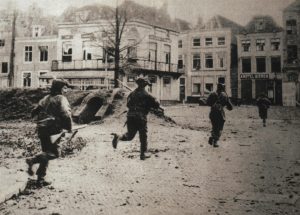
1st KOSB embarked for France in 1939 with the BEF (3rd Infantry Division). They crossed the Belgian frontier in May 1940, from where, facing an enemy of overwhelming numerical superiority, they were at length ordered to withdraw. On the night of 31st May/1st June they were evacuated from the beaches at Dunkirk. They returned to France on D-Day, 6th June 1944, landing at ‘Queen’ Beach. They fought around Caen until the town capitulated, and then advanced north through Belgium and Holland to the Rhine and Bremen. Also present in France in 1940 were the 4th and 5th (Territorial) Battalions, with the 52nd (Lowland) Division, forming part of a second BEF. Landing at St. Malo on the 13th June, the original intention to establish a bridgehead with the French Army was frustrated by the fall of France, and on the 18th June the 2nd BEF was evacuated from Cherbourg. 4th and 5th KOSB subsequently trained as mountain troops and later as air-transportable troops. In the event, they found themselves in the Low Countries in the autumn of 1944, making assault landings on Walcheren Island, at the mouth of the River Scheldt. They fought through into Germany, taking part in the capture of Bremen.
The 6th and 7th Battalions, duplicates of the 4th and 5th, were initially both in the 15th (Scottish) Division. The 6th landed with the Division on the Normandy beaches on the 15th June 1944, and soon found themselves involved in the fierce battles around Caen and the River Odon. Fighting through France, Belgium and Holland, and crossing the Siegfried Line, they advanced across the Rhine into Germany, ending the war just beyond Hamburg. 7th KOSB became glider-borne troops with the 1st Airborne Division, and in September 1944 they were flown into the dropping zones at Arnhem, where, surrounded by an enemy force superior in numbers and equipped with tanks, they fought a gallant but ultimately futile action. When the order to retreat was given on 25th September, the 740 strong Battalion had been reduced to 4 Officers and 72 men.
Having undergone jungle training in India, 2nd KOSB sailed with the 7th (Indian) Division to Burma in September 1943. They crossed into the Arakan, and took part in the critical actions at Ngakydauk Pass and in the ‘Admin Box’, where 2 COs were killed. Later they were flown to the central front at Imphal. In early 1945 they marched towards the Irrawaddy and took part in the assault that turned the Irrawaddy line. The Battalion’s last battle took place at Prome in May 1945, by which time Rangoon had fallen and the Japanese Army’s defeat in Burma was assured.
Post-war Army reductions led to the disbandment of the 6th and 7th Battalions in 1946, and the 2nd Battalion in 1947. Between 1945 and 1947 the 1st Battalion was on internal security duties in Palestine.
In 1951 1st KOSB – National Service men amongst its numbers - was posted to Korea. There it fought an arduous campaign against the Chinese and North Korean armies in extreme climatic conditions. On the night of 4th/5th November 1951 the Battalion was holding a position on a narrow, ridge in the Kowang-Sanregion. Throughout the day the soldiers had been subjected to a concentrated barrage of shell and mortar fire, and, as night fell, the Chinese infantry advanced an entire division of 6000 men. The positions of the forward companies were overrun, but the Battalion stood its ground, and the Chinese attack petered out. An initial casualty check after the attack revealed that 7 Borderers had been killed, 44 were missing and 87 were wounded. On returning to Hong Kong a full casualty check revealed that 31 Borderers had been killed, 90 were wounded and 20 had been taken Prisoners of War. Intelligence reports indicated that over 1000 Chinese had been killed. Pte. Bill Speakman was awarded the VC for his part in the battle, and 2nd Lt. W. Purves the DSO – the only National Service officer to have won this honour.
In Malaya during the Emergency (1955-59), the 1st Battalion was engaged in action in the jungle against Communist terrorists. From 1962 to February 1964 it was on internal security operations in Aden. In May 1964 it was recalled to Aden in aid of the Federal army, which was fighting Yemeni insurgents in the Radfan Mountains. In the following year the Battalion was in Borneo, patrolling the Malaysia-Indonesia border.
From 1970 onwards, 1 KOSB spent a great deal of time in Northern Ireland , the last tour in 2004 – 2006. The 'Derryard Incident' took place during 1 KOSB's 6th tour of Northern Ireland, on the 13th December 1989. The Provisional IRA launched a major assault on the Derryard Permanent Vehicle Checkpoint near the Fermanagh-Monaghan border, which was manned by two teams from Support Company, 1 KOSB. The attack had evidently been carefully planned, and was on a scale unprecedented in Northern Ireland, involving at least 12 terrorists armed with rockets, flamethrowers, Armalite and AK47 rifles, machine guns and fragmentation grenades. An armoured lorry smashed into the compound, and a van containing a 240-kilogram bomb was driven in. The Jocks inside the base were subjected to intensive fire, and suffered a number of casualties, in spite of which they remained calm and organised, attended to their wounded, and returned fire. They were reinforced by a returning security patrol, and after 10 minutes of fierce close-quarter fighting, the terrorists were beaten back. Two KOSBs lost their lives in this incident; 2 DCMs were awarded, and 1 posthumous MID.
In addition, the Battalion and detachments were involved in operations and exercises throughout the world, from Belize (1978) to Cyprus (1999-2001). The Regimental Tercentenary in 1989 was marked by a year of celebration and pageantry, culminating in an unforgettable Parade through Edinburgh on Minden Day.
On New Year's Day 1991, with the Battalion on block leave and key officers abroad, the order came to mobilise for service in the Gulf. Within 24 hours the entire Battalion had been recalled, and 21 days later they were deployed to the Gulf as part of Operation Granby/Desert Storm. After a period of training in Saudi Arabia they moved into battle positions on the 23rd February, crossing into Iraq on the 26th and into Kuwait at the beginning of March. Their principal role was the processing and guarding of POWs. A new Battle Honour, ‘Gulf 1991', was awarded.
In May 2003 the Battalion was deployed to southern Iraq to help maintain law and order in the aftermath of the overthrow of Saddam Hussein. As well as providing a measure of security and stability in the Maysan Province , they helped out in the frequent crises brought about by shortages of fuel, water and electricity, and in the general task of reconstruction. There were constant fire fights with gangs of insurgents and criminals, and at the end of their tour in November 2003, the Battalion had added an OBE, a CGC an MC and 5 MIDs to the list of honours and awards won by the Regiment over the years.
In March 2006, the Regiment became The King’s Own Scottish Borderers’ Battalion of The Royal Regiment of Scotland. On the 1st August of that year, the Royal Scots and KOSB Battalions merged to form the 1st (Royal Scots Borderers) Battalion of the new Regiment.
It is impossible within the space of a short account to give a complete history of the Regiment, or, indeed, to list in full its Battle Honours – 66 were gained between 1914 and 1918 alone. The Honours appearing on the Regimental Colours are highlighted throughout the text.
If you are interested in finding out more about the Regiment's history, 'The King's Own Scottish Borderers: A Concise History' by Trevor Royle, Edinburgh & London 2008, is recommended. This contains a comprehensive bibliography.
|
|
Lieutenant G.H.B Coulson, V.C., D.S.O. 1st KOSB. South Africa, 18th May 1901. For coming to the rescue of a wounded NCO whose horse had been shot from under him. He lost his life in the act. |
|
|
Piper D.Laidlaw,V.C., Fr.C. de G. 7th KOSB. Loos, 25th September 1915. At the outset of the battle, the battalion was confronted by poison gas and heavy artillery fire. The legendary ‘Piper of Loos’ led the assault from the trenches, playing the Regimental March and Charge. Although badly wounded in the legs, he followed the Jocks towards their objective until the severity of his wounds forced him to withdraw. |
|
|
CSM J Skinner, V.C., D.C.M. 16th August 1917. In spite of a head wound, CSM Skinner led a party of 6 men to clear 3 blockhouses, capturing 60 prisoners, 3 machine guns and 2 mortars. He was subsequently killed by a sniper’s bullet. 9 V.C.s from the 29th Division were present at his funeral, 6 of them acting as pallbearers. |
|
|
CQMS W.Grimbaldeston, V.C., Fr. C. de G. 1st KOSB. 3rd Ypres, 16th August 1917. Single-handedly, CQMS Grimbaldeston bombed out a blockhouse, taking 36 prisoners, 6 machine guns and a mortar. |
|
|
Sgt. L. Mcguffie, V.C. 5th KOSB. Wytschaete Ridge, 29th September 1918. Sgt. McGuffie, on his own, attacked a series of enemy dugouts, disarmed a party of Germans escorting British POWs and captured a blockhouse. He was killed a few days later. |
|
|
Pte. W. Speakman,V.C. 1st KOSB. Korea, 5th November 1951. Acting on his own initiative, and although his Company was vastly outnumbered, Pte. Speakman led a party of 6 men in a series of grenade charges against the enemy, driving them from his position and enabling the rest of his Company safely to withdraw. |
